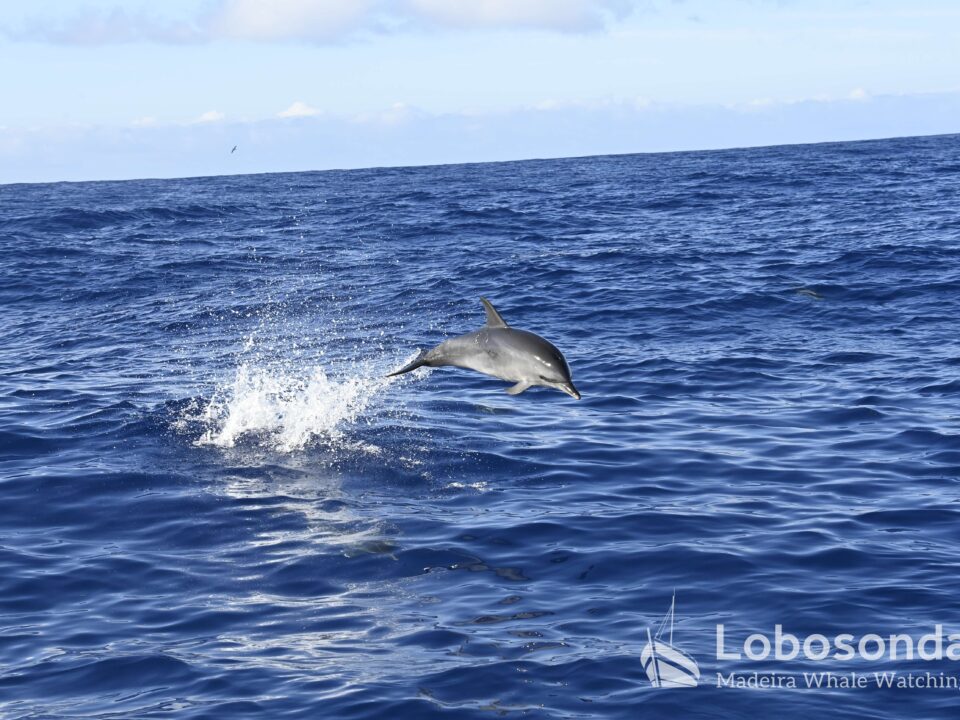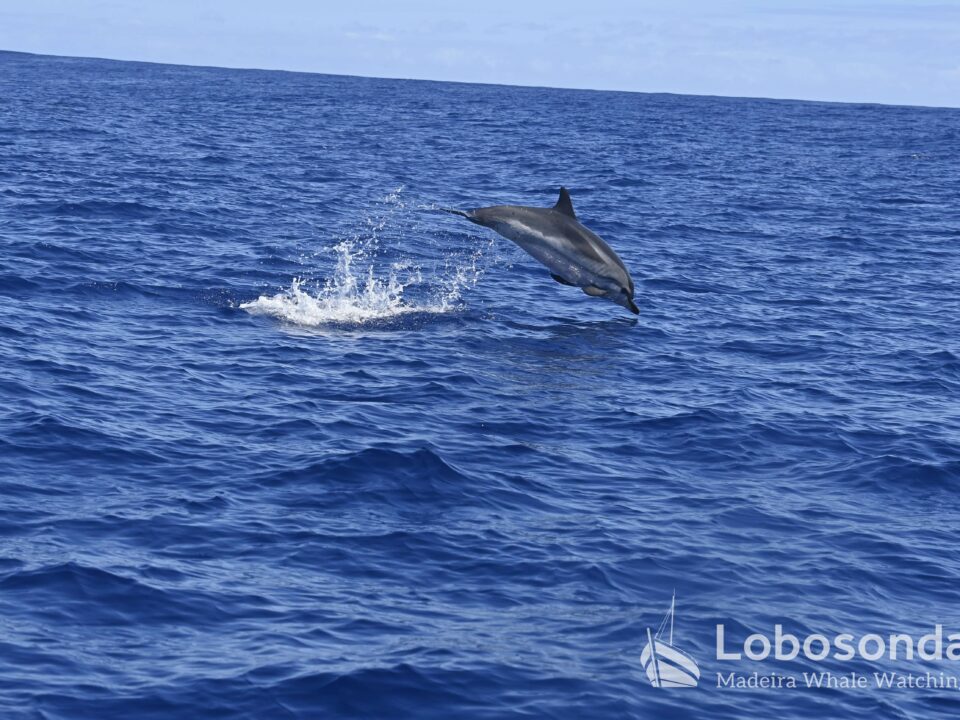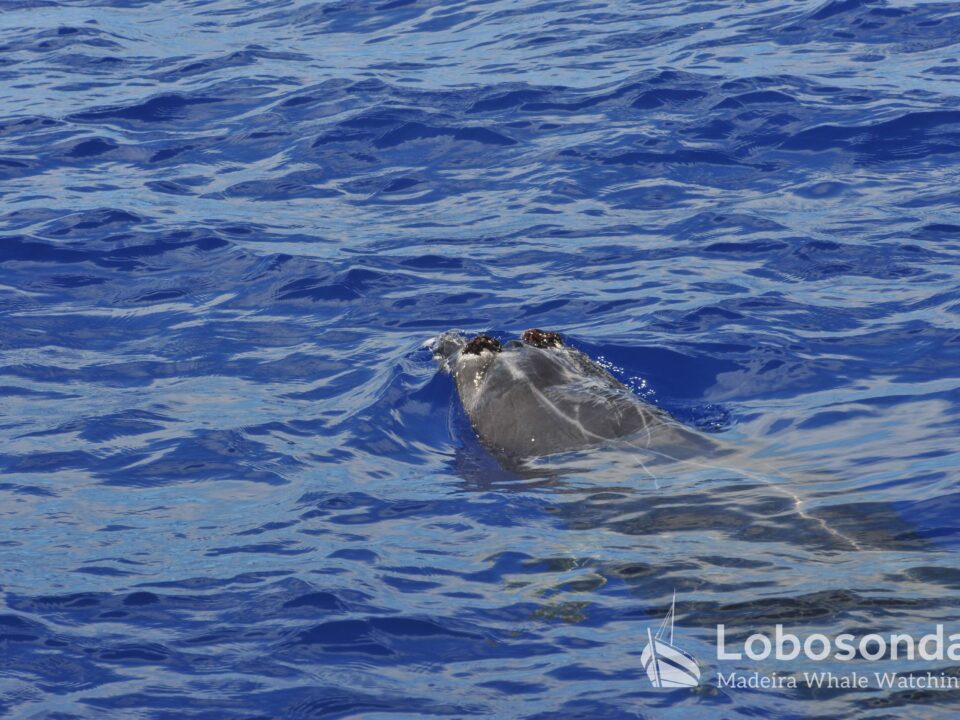The Blue Dream Project
June 6, 2018
26.05.2018 – Dolphins DELUXE
June 8, 2018Toothed whales (Odontoceti) are social animals and everyone who has had the pleasure of enjoying an encounter with a member of this diverse family of marine mammals knows this. Every odontocete species has its own typical group size which is subject to a range of variations depending on the species and the characteristic social dynamics amongst individuals. The fluid structure of the fission-fusion societies of dolphins can lead to large scale assemblages with some animals forming „super pods“ consisting of several hundered dolphins.
Today cetacean congregations made it easier for both spotter and skipper to provide our guests with wonderful sightings despite the windy conditions out on the Atlantic. We met a very large group of Bottlenose dolphins (Tursiops truncatus), which had gathered right in front of our marina. The majority of the animals were busy hunting cavalas (mackerel), while others socialized and occasionally swam up to our bow. Typically, Bottlenose dolphin group sizes close to shore range from 15-20 animals but larger aggregations are also possible when convenient feeding opportunities arise, which was likely the case today. These individuals were also spotted this afternoon along with a large group of Short-beaked common dolphins (Delphinus delphis). Unlike Bottlenose dolphins, it’s very typical for common dolphins to occur in very large groups of 60-80 animals.
Sperm whales (Physeter macrocephalus) were also encountered in the morning. The group size of this species is rather constant due to its matriarchal nature, where a large female leads a small group of females, juveniles and calves. Infact, we recognised this small group of five individuals as the same group we had encountered earlier last week.
By Paula Thake
Sightings of the day
Ribeira Brava
10:00 Bottlenose dolphins, Sperm whales
14:30 Bottlenose dolphins, Short-beaked common dolphins
















